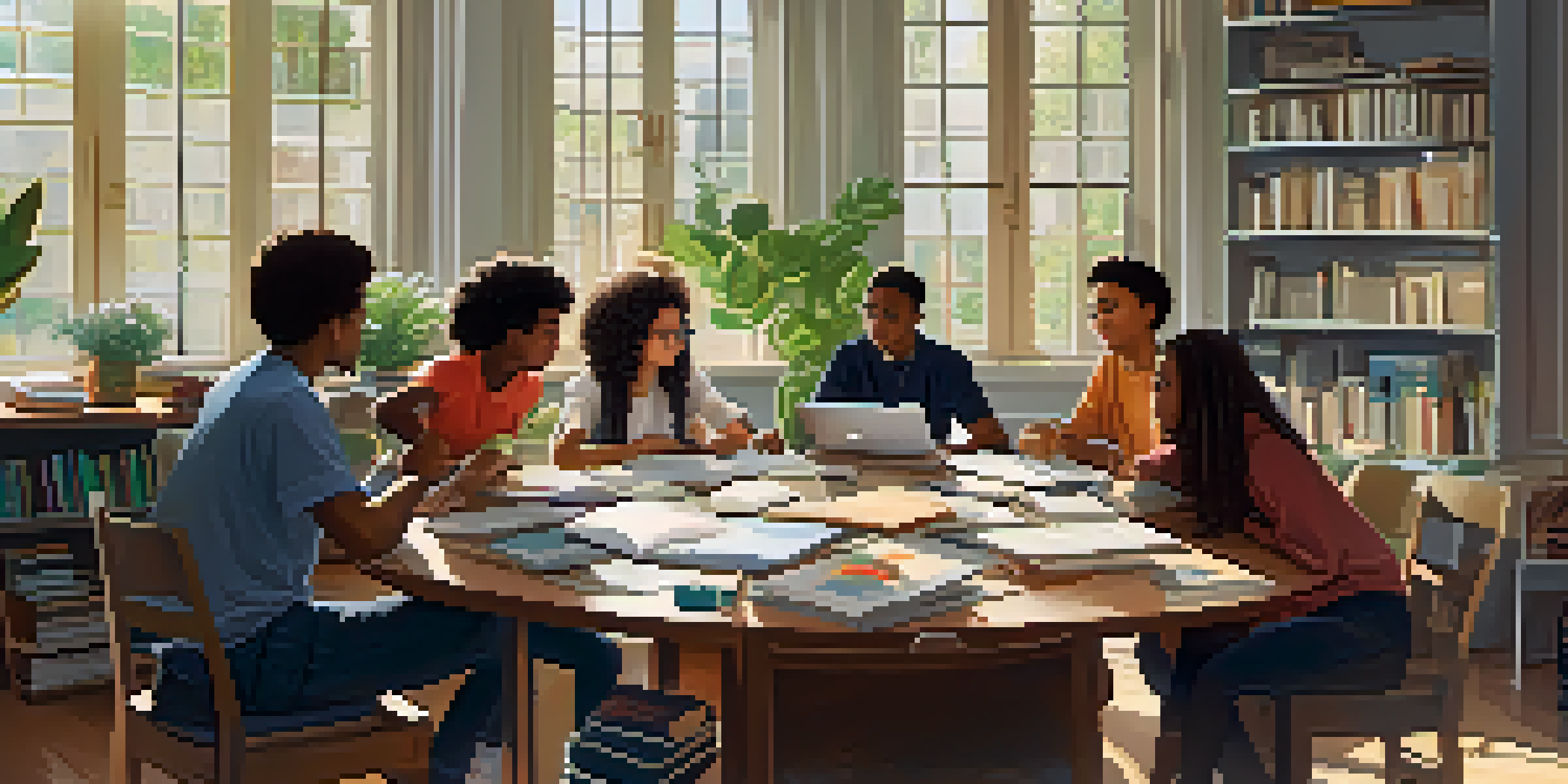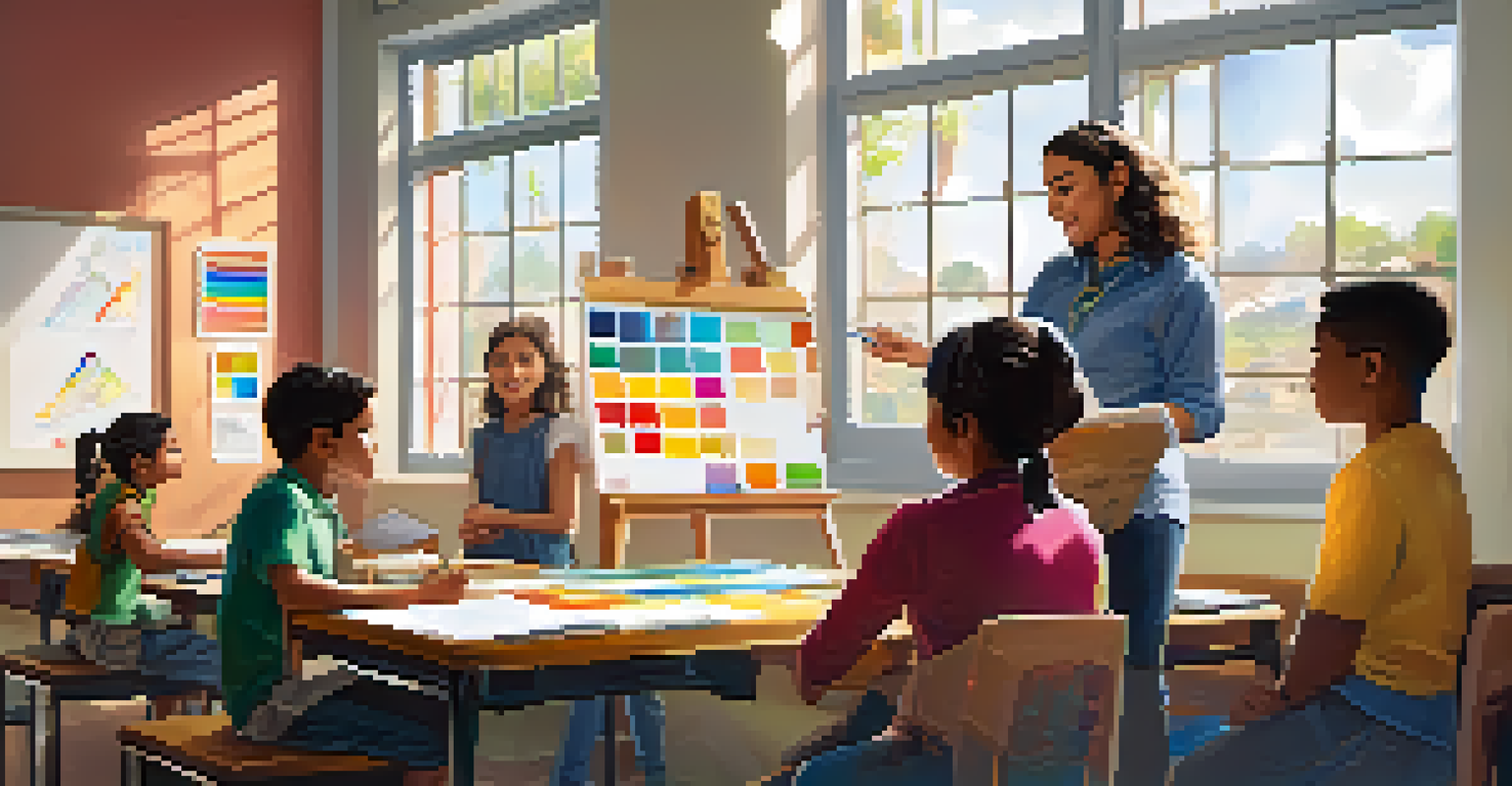Collaborative Learning for Developing Leadership Skills in Students

Understanding Collaborative Learning and Its Importance
Collaborative learning is an educational approach that involves groups of students working together to solve problems or complete tasks. This method encourages interaction, communication, and teamwork, making it a powerful tool for developing leadership skills. When students engage in collaborative projects, they learn not just from the material but also from each other, fostering a sense of community and shared responsibility.
Alone we can do so little; together we can do so much.
In the context of leadership, collaborative learning helps students understand various perspectives and appreciate the value of diverse ideas. This environment nurtures critical thinking and decision-making skills, essential attributes for any leader. By practicing collaboration, students also learn to navigate conflicts and negotiate solutions, which are key components of effective leadership.
Moreover, collaborative learning is inherently adaptable, allowing educators to tailor activities to suit different learning styles and objectives. This flexibility means that leadership skills can be cultivated across various subjects and disciplines. As students collaborate, they also build resilience and confidence, preparing them to take on leadership roles in the future.
Key Leadership Skills Developed Through Collaboration
One of the primary leadership skills honed through collaborative learning is effective communication. Students must articulate their ideas clearly and listen actively to others, which is crucial in any leadership scenario. This practice not only improves their speaking and listening abilities but also fosters empathy and understanding within a group.

Another vital skill is teamwork, as students learn to work towards common goals while respecting individual contributions. This experience teaches them the importance of delegation, accountability, and recognizing strengths in others—traits that are essential for successful leaders. Through collaboration, students get the chance to lead and follow, experiencing both sides of teamwork.
Collaborative Learning Enhances Skills
Students develop crucial leadership skills such as communication, teamwork, and problem-solving through collaborative learning experiences.
Finally, problem-solving skills are significantly enhanced in a collaborative environment. When faced with challenges, students brainstorm and innovate together, learning to approach problems from different angles. This collective problem-solving process equips them with the ability to think critically and make informed decisions, essential qualities for any future leader.
The Role of Educators in Facilitating Collaborative Learning
Educators play a crucial role in shaping the collaborative learning experience. They must create an environment that encourages open dialogue and mutual respect, setting the tone for effective collaboration. By establishing clear expectations and guidelines, teachers can foster a culture where all students feel valued and empowered to contribute.
The greatest leaders are not necessarily those who do the greatest things. They are the ones that get the people to do the greatest things.
Moreover, educators can design activities that promote leadership opportunities within collaborations. For instance, assigning rotating roles such as facilitator, note-taker, or presenter allows every student to experience leadership in a safe setting. This structure not only enhances learning outcomes but also builds students' confidence in their leadership abilities.
Finally, providing constructive feedback is essential for growth. Educators should offer insights into how well students are collaborating and leading, helping them identify areas for improvement. This ongoing feedback loop enables students to refine their skills and develop a more profound understanding of what effective leadership entails.
Real-World Applications of Collaborative Learning
Collaborative learning isn't just confined to the classroom; its principles can be applied in various real-world scenarios. For example, students can engage in community service projects that require teamwork and leadership. These experiences help them understand the impact of collaboration beyond academics, fostering a sense of social responsibility.
Additionally, internships and group projects in professional settings offer students a chance to practice their collaborative skills in a workplace environment. They learn to navigate different roles and dynamics, preparing them for real-life leadership challenges. Such experiences provide a practical context for the skills they've developed during their educational journey.
Educators Shape Collaborative Success
Teachers play a vital role in facilitating effective collaborative learning by fostering a respectful environment and providing constructive feedback.
Furthermore, collaborative learning can extend to online platforms, where students work together on virtual projects. This adaptability not only prepares them for the increasingly digital world but also teaches them how to lead diverse teams across geographical boundaries. The skills learned through these experiences are invaluable in today’s interconnected society.
Challenges of Implementing Collaborative Learning
While collaborative learning offers many benefits, it also comes with challenges that educators and students must navigate. One common issue is varying levels of participation among group members, which can lead to frustration and imbalance in workload. It's essential for educators to monitor group dynamics and encourage equitable contributions to ensure every voice is heard.
Another challenge is the potential for conflict among group members. Differing opinions and working styles can create tension, making it crucial for students to develop conflict resolution skills. Educators can assist by providing strategies for managing disagreements, turning potential setbacks into opportunities for growth in leadership and teamwork.
Lastly, assessment can be tricky in collaborative settings. Traditional grading methods may not accurately reflect individual contributions and learning. Educators should consider alternative assessment techniques, like peer evaluations and self-reflections, to provide a more comprehensive picture of each student’s skills and contributions.
Measuring the Impact of Collaborative Learning on Leadership Skills
To truly understand the effectiveness of collaborative learning in developing leadership skills, measuring its impact is essential. Educators can utilize surveys and assessments before and after collaborative projects to evaluate students' growth in key leadership areas. This data helps in understanding how collaborative experiences shape their skills over time.
Additionally, qualitative feedback from students can provide insights into their experiences and personal growth. Encouraging students to reflect on their collaborative learning experiences allows them to recognize their development in teamwork, communication, and problem-solving—all critical leadership skills.
Real-World Applications Matter
Applying collaborative learning principles in real-world settings, like internships and community projects, prepares students for future leadership challenges.
Finally, tracking students' progress in leadership roles outside the classroom can serve as a long-term measure of success. Observing how they apply their skills in extracurricular activities, internships, or community service helps educators adjust their approaches and enhance the collaborative learning experience.
Future Trends in Collaborative Learning and Leadership Development
As education continues to evolve, so does the concept of collaborative learning. With advancements in technology, online collaborative tools are becoming more prevalent, allowing students to work together regardless of location. This trend opens new avenues for leadership development, as students learn to lead diverse teams in virtual environments.
Moreover, the increasing emphasis on social-emotional learning (SEL) in education highlights the importance of collaboration in fostering leadership skills. SEL focuses on developing interpersonal skills, empathy, and self-awareness—qualities that are essential for effective leadership. Integrating SEL principles into collaborative learning can create a more holistic approach to leadership development.

Finally, as workplaces increasingly value collaboration, schools must adapt their teaching methods to prepare students for the future job market. By continuing to prioritize collaborative learning, educators can equip students with the skills needed to thrive in teamwork-oriented environments and take on leadership roles in their careers.